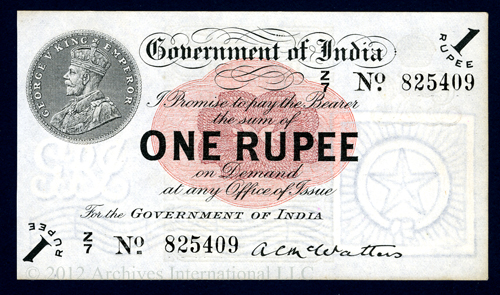
About UsThe Numismatic Bibliomania Society is a non-profit organization promoting numismatic literature. For more information please see our web site at coinbooks.org SubscriptionsThose wishing to become new E-Sylum subscribers (or wishing to Unsubscribe) can go to the following web page link MembershipThere is a membership application available on the web site Membership Application To join, print the application and return it with your check to the address printed on the application. Membership is only $15 to addresses in the U.S., $20 for First Class mail, and $25 elsewhere. For those without web access, write to: David M. Sundman, Secretary/TreasurerNumismatic Bibliomania
Society AsylumFor Asylum mailing address changes and other membership questions, contact David at this email address: dsundman@LittletonCoin.com SubmissionsTo submit items for publication in The E-Sylum, just Reply to this message, or write to the Editor at this address: whomren@coinlibrary.com
BUY THE BOOK BEFORE THE COINYou won't regret it! |
- WAYNE'S WORDS: THE E-SYLUM MARCH 31, 2013
- FIRST E-SYLUM READER SURVEY RESULTS
- SKLOW SALE #19 HIGHLIGHTS
- ERIC P. NEWMAN COLLECTION SPECIAL HARDCOVER EDITIONS
- NEW EDITION: GREEK, SEMITIC, ASIATIC COINS AND HOW TO READ THEM EDITION
- NEW BOOK: STRIKING GOLD IN ALASKA, 4TH EDITION
- NEW BOOK: NUMISMATIC EMOTIONS
- WANTED: A BOOK ON POST-1892 U.S. MINT MEDALS
- HARVEY STACK ON THE FIRST 1794 DOLLAR
- NOTES FROM E-SYLUM READERS: MARCH 31, 2013
- ON POLITICS AND NUMISMATICS
- B. G. JOHNSON’S LEDGER: NEWMAN DOLLAR PATTERNS
- SEATTLE'S ROBO-LIBRARIAN
- QUERY: 1875-S DIME AND 1917-D HALF DOLLAR IMAGES SOUGHT
- MORE ON HEIDI WASTWEET'S FREEDOM GIRL
- WILL BASEBALL COIN THROW MINTING TECHNOLOGY A CURVE?
- MINT ENDORSES PRIVATE COINAGE WITH ITS SURPLUS DIES
- NPR EXAMINES THE SCIENCE OF 'WHERE'S GEORGE?'
- BALDWINS TO AUCTION FINAL PART OF THE BENTLEY COLLECTION
- DOES U.S. PAPER CURRENCY MATCH MONOPOLY MONEY COLORS?
- WHERE ARE THE NEW $100 BILLS?
- THE MONEYMUSEUM IS AUCTIONING COINS TO RAISE FUNDS
- ARTICLE DISCUSSES 1936 CANADIAN DOT CENT
- NATIONAL GOLD EXCHANGE MANSION PRICE CUT
- MORE ON FRANKLINIUM
- COUNTERFEITER RETURNS PRINTER WITH FAKE NOTES INSIDE
- MORE EASTER-THEMED COINS AND MEDALS
- FEATURED WEB STE: THE VELDPOND COINAGE
WAYNE'S WORDS: THE E-SYLUM MARCH 31, 2013

New subscribers this week include Charles Bona, courtesy of Fred Michaelson, Richard Plant, courtesy of Fred Liberatore, Thomas Konar, Andy Bray, Henry Hilgard, Oleg Belogolovski and Heidi Wastweet. Welcome aboard! We have 1,638 email subscribers, plus 220 followers on Facebook.
This week we open with the results of our first E-Sylum reader survey, an update from David Sklow, an important announcement for bibliophiles regarding the Newman auction sales, and word of three new books.
Other topics this week include politics and numismatics, Monopoly Money and the Veldpond coinage of South Africa. To learn more about the robo-librarian, Franklinoleum, Georging and the man who threw cash overboard, read on. Have a great week, everyone!
Wayne Homren
Editor, The E-Sylum
FIRST E-SYLUM READER SURVEY RESULTS

After publishing the link to our first E-Sylum readers survey last week, responses immediately began rolling in - nearly 100 by 5:30am Monday. One reader encountered a problem, though. Yossi Dotan writes:
My apologies for the oversight, which I corrected. I used a free tool in Google Docs, and borrowed the country list from another user's survey so I wouldn't have to retype a 200+ entry list. I did end up hand-entering the 50 U.S. states. But despite the problems the survey seemed to work well.
The rule of thumb for direct response is that a 3% response rate is excellent. We got over four times that, and responses were still coming in Friday morning. I compiled these results Friday evening.
We are a diverse bunch. Although most responses (88%) came from the United States, we had responses from 14 different countries, including Australia, Belgium, Canada, China, France, Ireland, Israel, Mexico, New Zealand, South Africa, Taiwan, the United Kingdom and Vietnam.
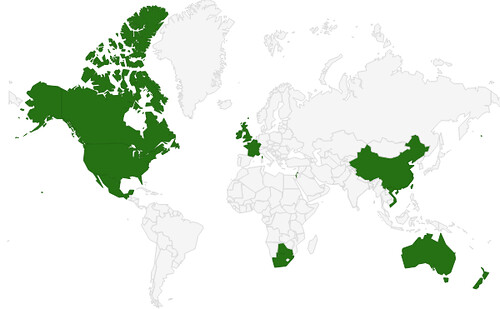
 Within the U.S., we have readers in
Alaska,
California,
Colorado,
Connecticut,
Delaware,
Florida,
Hawaii,
Idaho,
Illinois,
Indiana,
Iowa,
Kansas,
Louisiana,
Maine,
Maryland,
Massachusetts,
Michigan,
Minnesota,
Mississippi,
Missouri,
Montana,
Nevada,
New Hampshire,
New Jersey,
New Mexico,
New York,
North Carolina,
Ohio,
Oklahoma,
Oregon,
Pennsylvania,
South Carolina,
Tennessee,
Texas,
Virginia,
Wisconsin,
Wyoming and Washington, D.C.
Within the U.S., we have readers in
Alaska,
California,
Colorado,
Connecticut,
Delaware,
Florida,
Hawaii,
Idaho,
Illinois,
Indiana,
Iowa,
Kansas,
Louisiana,
Maine,
Maryland,
Massachusetts,
Michigan,
Minnesota,
Mississippi,
Missouri,
Montana,
Nevada,
New Hampshire,
New Jersey,
New Mexico,
New York,
North Carolina,
Ohio,
Oklahoma,
Oregon,
Pennsylvania,
South Carolina,
Tennessee,
Texas,
Virginia,
Wisconsin,
Wyoming and Washington, D.C.
As for NBS membership, it was about a 40/60 split - 40% of respondents were NBS members, 60% were not. Remember, while The E-Sylum is free to all, only NBS members receive our print journal, The Asylum.
The overwhelming majority of readers (some 82%) access The E-Sylum via email. About 10% read it on the NBS web site. Much smaller numbers (from 1% to 3%) report using other options, which include the Smartphone app, RSS, Facebook and Google+. Some readers access The E-Sylum by up to three different methods.
Thanks to everyone who participated. Were these results what you expected? And now that we have our first survey under our belts, perhaps we can plan others in the future. What questions should we ask? What would you like to learn from our readers?
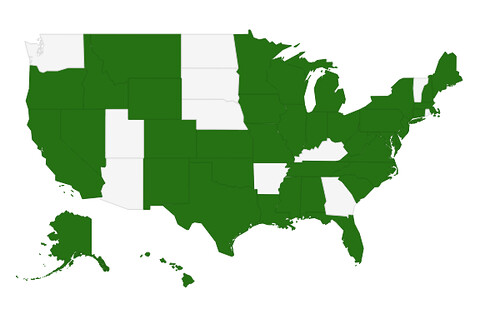
Email has generally been a pretty good delivery mechanism, but there are always a few that at least occasionally report not getting their copy of the issue. We had a few copies go missing this week, and one was Harvey Stack's.
Harvey writes:
I can tell you that when The E-Sylum doesn't arrive on Sunday, it is like not having my newspaper delivered, and I am always wondering what great stuff and information I have missed.
The broad base of your editing covers a vast amount of subjects that I have great interest in. and I am sure ALL YOUR READERS would say the same. Thanks again for making me better informed and able to enjoy more of the week than I would without your help.
I think we should get some advertising out to expand your mailing list. I really feel more should read these reviews and stories to be better Numismatists. When I think for the past decade the ANA has stayed with some 30,000 members, and the U.S. Mint says there are some 175,000,000 collectors, something is missing.
I don't know about the 175M number, but the 30,000 ANA members are a ripe target. 1,600+ readers isn't too shabby for a fairly specialized publication like The E-Sylum, but we can always do better. Anyone interested enough in the hobby to join the national club ought to find something of interest in The E-Sylum. If we were to reach only 10% of ANA's membership we could nearly double our readership.
SKLOW SALE #19 HIGHLIGHTS
-
 Long run of Barney Bluestone Auction Catalogs
Long run of Barney Bluestone Auction Catalogs
- Long run of M. H. Bolender Auction Catalogs
- Nice offering of hard bound Bowers & Merena Auction Catalogs
- Nice run of Thomas L. Elder Auction Catalogs
- Original Engraved Portraits of Washington, 1880, by Baker
- State Bank Notes of Michigan 1956, by Bowen including original correspondence
- Eckfeldt & Du Bois 1842 work, A Manual of Gold and Silver Coins of all Nations
- Two Stan V. Henkel Auction Catalogs, Collection of Engraved Portraits of Washington
- Nathaniel Paine’s 1866 Remarks on the Early Paper Currency of Massachusetts with 4 mounted photographic plates, Copy Number 16, ex: Q. David Bowers
- Selections from the library of the late Harold Shaw Bareford
- Deluxe interleaved edition of Browning’s Early Quarter Dollars work, by John J. Ford, ex: Homer Downing sale
- Plated Chapman Catalog of the Stickney sale, ex: Col. Green, C. E. Gilhousen, Homer Downing
- Plated Chapman Catalog of the Bement sale, ex: Homer Downing
- Plated Chapman Catalog of the Jackman sale, ex: Homer Downing
- Plated Chapman Catalog of the Gable sale, ex: Homer Downing
- Crosby’s Early Coins of America, 1878, ex: Homer Downing
- Plated Elder Catalog of the Mougey sale, ex: Col. Green, Homer Downing
- Many important auction sale catalogs concerning U. S. Large Cents with annotations by Harold Bareford
- Plated New York Coin & Stamp Co. Catalog of the Robert Coulton Davis sale
- Plated Chapman Catalog of the John Mills sale
- Newcomb U.S. Cents of 1801-1802-1803 with supplemental plates, autographed by Newcomb
- Clapp U.S. Cents of 1798-1799, ex: Homer Downing sale
- Crosby, Coinage of 1793, ex: Homer Downing sale
- Unbound limited numbered edition of John W. Adams U.S. Numismatic Literature Vol. II
- Four volumes of American State Papers
- ANA Badges of Art Kagin
- Canadian selections from the library of Charles Moore
- 1987 ANA Special edition Redbook, autographed by R. S. Yeoman & Chet Krause
- Long run of EAC Convention Auction Catalogs 1975-2000, many with deluxe photographic plates
- EAC Penny Wise 1967-1976
-
 Deluxe Full Leather # 9 of 12 Attribution Guide for U. S. Large Cents 1840-1857, by Grellman
Deluxe Full Leather # 9 of 12 Attribution Guide for U. S. Large Cents 1840-1857, by Grellman
- Deluxe Full Leather # 6 of 12 U. S. Large Cents 1793-1814, by Noyes
- Deluxe Full Leather # 6 of 12 U. S. Large Cents 1816-1839, by Noyes
- Deluxe Full Leather # 6 of 12 U. S. Large Cent – Plates Volume, by Noyes
- Deluxe hard bound The Story of the Starred Reverse Cent, by Pete Smith
- Colorado Territorial Scrip, by Mumey
- Complete set of Lester Merkin Auction Catalogs
- Four volumes of Numismata Graeca-Greek Coin Types, By Anson
- Traite des Monnaies Grecques et Romaines, by Ernest Babelon, Four Volumes
- A run of Sylloge Nummorum Graecorum: The Royal Danish National Museum, 27-33, 35, 37, 40, 42-43
- Selections from the Latin American working library of Art Garnett, many works autographed by the authors
- Over 100 nineteenth century American auction catalogs
- Bound set of Numismatic Literature from the American Numismatic Society
- Dekesel’s monumental works, Bibliography of Numismatic Books for the 16th & 17th centuries
- And much more!
It is a very diversified sale, covering a multitude of numismatic areas.
The catalog should be on our web site by May 1st; print catalogs will go in the mail the first week of May.
David Sklow-Fine Numismatic Books
P.O. Box 6321
Colorado Springs, CO 80934
PH: 719-302-5686
FAX: 719-302-4933
EMAIL:
numismaticbooks@aol.com
WEB:
FineNumismaticBooks.com
ERIC P. NEWMAN COLLECTION SPECIAL HARDCOVER EDITIONS
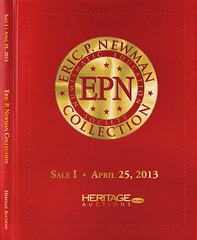 Kolbe & Fanning Numismatic Booksellers are pleased to announce that they have been selected to produce special edition hardcover catalogues for the series of auction sales of numismatic items selected from the Eric P. Newman Numismatic Education Society (EPNNES) collection. The sales begin with the April 25, 2013 auction of pattern coins being offered by Heritage Auctions. It is expected that a series of at least ten sales will be held during the next few years by various auction firms offering selections from the EPNNES collection.
Kolbe & Fanning Numismatic Booksellers are pleased to announce that they have been selected to produce special edition hardcover catalogues for the series of auction sales of numismatic items selected from the Eric P. Newman Numismatic Education Society (EPNNES) collection. The sales begin with the April 25, 2013 auction of pattern coins being offered by Heritage Auctions. It is expected that a series of at least ten sales will be held during the next few years by various auction firms offering selections from the EPNNES collection.
Each special edition hardcover catalogue will be professionally and attractively bound in uniform style and will be available by advance subscription. Subscribers to the entire series will be able to purchase each special edition catalogue for $95 plus $5 shipping in the United States (customers outside the U.S. will pay $95 plus the actual cost of foreign postage). Customers wishing to purchase only a particular sale will be able to do so for $120 plus postage while supplies are available. It is expected, however, that most of the available catalogues will be reserved for subscribers to the series.
The Eric P. Newman Numismatic Education Society will receive $25 from the sale of every catalogue to further its philanthropic activities, including the advancement of numismatic scholarship.
To subscribe to the special edition hardcover catalogues of the Eric P. Newman Numismatic Education Society sales, please visit the Kolbe & Fanning website at www.numislit.com, where orders may be securely placed by credit card. You may also contact David Fanning to place subscription orders at (614) 414-0855 or via email at df@numislit.com.
Kolbe & Fanning are honored to be participating in this remarkable numismatic happening. The special edition catalogues will be a fitting tribute to an extraordinary collection and an extraordinary man. Visit www.numislit.com to subscribe today.
NEW EDITION: GREEK, SEMITIC, ASIATIC COINS AND HOW TO READ THEM EDITION
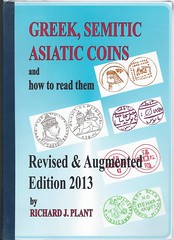 Greek, Semitic , Asiatic Coins and How to Read Them: A Revised and Augmented Edition, 2013, by Richard J. Plant
Greek, Semitic , Asiatic Coins and How to Read Them: A Revised and Augmented Edition, 2013, by Richard J. Plant
The original edition of this numismatically most useful book was published in 1979 in just 100 copies.
The book is divided into 4 main sections, Greek based alphabets, Semitic alphabets, Indian alphabets, and Chinese. It takes a full 46 chapters to cover this much numismatic ground. There are over 1,000 hand drawn illustrations in the 322 pages in a roughly 8 1/2 x 11 inch (200 mm x 275 mm) format. Exercises are at the end of each chapter with answers supplied in an appendix. What this book does, and does well, is to provide coin collectors and numismatists the basic information to identify and read the inscriptions on unusual and obscure coinages.
What this book does not do is provide information on the rarity or value of the coins. Readers will notice several different type faces throughout the text. Wherever the type face varies from the commonest type face, you are reading added or revised information.
The book can be ordered from Maximus Publications, Grandad Press, C/O Allan N. Wallace; 46 The Hollows, Bessacarr; Doncaster DN4 7PP, South Yorkshire, England at a cost of 25 pounds plus 15 pounds for FedEx (Interparcel) shipping. Bank checks need to be denominated in English pounds.
The author, Richard J. Plant, may be contacted at rplant56@talktalk.net or called at 01302323089 for information on payment options which is advisable.
The press run on this book is likely to be small. Copies will be signed and hand numbered by the author.
Richard Plant writes:
In the 1970's it was not easy getting "funny-shaped" letters printed, and with "Arabic Coins and How to Read Them", even Seaby's were doubtful about doing the book. I found a small printing firm in the Manchester area (we lived in Manchester at the time) that was willing to print the pages leaving me space to insert the Arabic by hand, and I sent the completed pages a few at a time up to Peter Seaby in London - it took a long time, but eventually it was completed and printed, and published by Seaby.
I then felt it might be possible to do other scripts in a similar way, as I've always been interested in languages, - and as we were in Manchester, with its excellent libraries it might be possible to get a book on these other scripts produced. But difficulties arose - I was sent by the Methodist Church to Doncasterto look after churches there, and so could not use that small printing firm in the same way, and Seaby were not interested in this book; but eventually I found Bruce Braun and Francis Rath of Scorpion Press USA, who took it on. They were going to pay me royalties for each 100 copies as it was sold. I received money from them for the first 100, but then their partnership broke up - and that was the end of that!
After years of searching in around 2000 I found another American gentleman, who was willing to print a revised version of the book; but with the destruction of the Twin Towers my manuscript "disappeared"; and it was not until around 2010, after a strong suggestion from Mr. Liberatore, and my friend, Allan Wallace's offer to "have a go" that it seemed to me I ought I ought to take it up again, as it seemed to me that it covered ground not covered by any other book that I knew about. I have found that researching for such a work is very rewarding, and you learn far more than you are trying to teach.
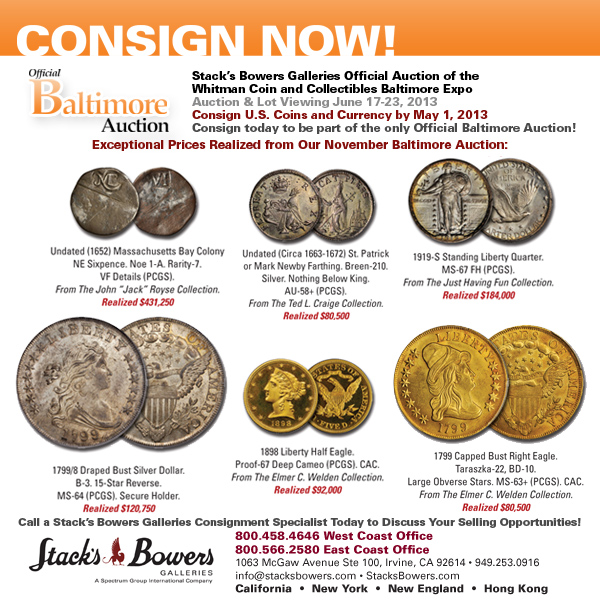
NEW BOOK: STRIKING GOLD IN ALASKA, 4TH EDITION
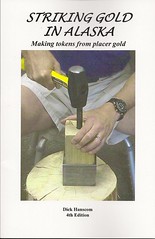 We are pleased to announce the publication of the fourth edition of “Striking Gold in Alaska.”
We are pleased to announce the publication of the fourth edition of “Striking Gold in Alaska.”
This new edition is a full 6 inches by 9 inches (previous editions were trimmed down from this size), and 148 pages, up from 91. The “chapters” are rearranged in what I believe to be a more logical manner.
There are several new techniques to improve the quality of dies, and some time saving short cuts. Problems that have been encountered are examined. A new and improved collar for my 1 DWT tokens is used for the first time
During the Boer War in South Africa (about 1900), the Boers issued a gold coin manufactured under primitive conditions - the Veld Pond. We have been granted permission to reprint an article about this, and I think you will find that it makes an interesting comparison to what I do.
Information about my non-gold tokens is included. I have acquired some old Alaska token dies, and these have been used to make new tokens, including prototypes for a new 1 ounce gold token (still in the planning stages).
I have quoted extensively from USGS reports about the mining districts and creeks from which I have purchased gold and made tokens. Where available, maps have been included.
Up to date, current mintages are reported. This also serves as a roster of all the tokens I have made. I don’t think I have missed anything.
Photos from old post cards have been included to enhance your appreciation of what the old time miners had to endure. Keep in mind that it was mostly hand work, no machinery!
You may order your copy for $18, postpaid from:
Alaska Rare Coins
P.O. Box 72832
Fairbanks, AK 99707
NEW BOOK: NUMISMATIC EMOTIONS
Damiano Cappellari of Verona Italy writes:
I've written a new book about numismatics... Emozioni Numismatiche or Nummophilo's Defense. I'd like to translate my book into English, but, as you see, I need a hand...! Can you help me?
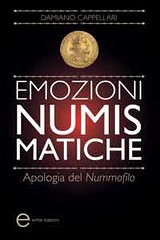 Title: Numismatic Emotions
Title: Numismatic Emotions
Author(s): Damiano Cappellari
Publisher: Enter
Year of publication: 2012
Country of publication: Italy
Copyright: © 2012 Enter
ISBN: 9788897545217
Edition: Standard paper edition
Language: Italian
Binding: Paperback
Pages: 164
Size: 12.5 × 18.5 cm
Price (EUR): 9.00
Abstract: “After so many books that focus almost entirely on coins, here at last is a work that focuses on the collector, the student and the numismatic enthusiast. After a lifetime spent among numismatists (shortly after being born I was taken in hand by a numismatist – my father), I have come to believe that the nature and perhaps also the beauty of our world lie in the very difficulty of fitting it into a pattern, in the sense that I have known a vast number of coin collectors, some of whom have become “coin students” and in some cases even “coin addicts”. Likewise, I know many coin students who are also coin collectors. The magnetic field that causes these transformations, some of them quite sudden, is born of the coins themselves and the powerful force of gravity that they exert.”
For more information, or to order, see: D. Cappellari, Emotions Numismatic (www.enteredizioni.it/negozio/fuori-collana-catalogo/d-cappellari-emozioni-numismatiche/)
WANTED: A BOOK ON POST-1892 U.S. MINT MEDALS
I certainly agree with previous comments on the need for a book of U.S. Mint medals to carry on where Bob Julian left off.
Such a work would be a major contribution to the numismatic field. The author would earn the praise of numismatists for a century provided he did a proper job. Cataloged properly your last name would be tied to these medals forever, as "Julian numbers" are for the first century.
It must appear a daunting and insurmountable task, as too many have shunned the chore. I contend it would be a lot easier than what Bob Julian had to do to write about the first century's mint medals.
First, those of us who do have data on these medals would be willing to share that information, myself included. Perhaps Pete Smith could be persuaded to share his 100-page manuscript draft. That's a big start.
Second, the next source would be the Annual Reports of the Director of the Mint. These Reports listed the medals made by the Mint for each year up to about 1980. The ANS has a complete set from 1892 forward that should the searched.
Third would be a search of back issues of Coin World as they carried an announcement of most new medals when first issued.
That should provide a working list, then add photos. At this point the real fun begins of gathering data on each medal and writing the descriptive entry for each. I have a 20-point checklist for this stage not to overlook a single important fact. (Glad to share that!)
Most important to choose a good numbering system.
Be sure to name every medal. Bob Julian did not do this ; he gave the title of the medal, not its name. I lost the argument with him over this. Like people, every object in the world has a name. Every medal has a name. Please use that.
Have I encouraged someone to step forward? We urgently need this book!
To read the earlier E-Sylum article, see: INFORMATION ON POST-1892 U.S. MINT MEDALS (www.coinbooks.org/esylum_v16n12a10.html)
THE BOOK BAZARRE
HARVEY STACK ON THE FIRST 1794 DOLLAR
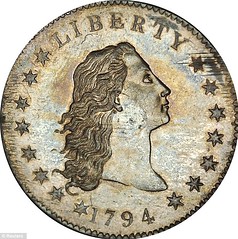 In Baltimore, I spent some time discussing
the 1794 Silver dollar with John Danreuther. We have the same
opinion regarding if the Silver dollar was probably the first one
struck, after the Copper Example, that Stack's gave to the
Smithsonian, to be part of the National Collection.
In Baltimore, I spent some time discussing
the 1794 Silver dollar with John Danreuther. We have the same
opinion regarding if the Silver dollar was probably the first one
struck, after the Copper Example, that Stack's gave to the
Smithsonian, to be part of the National Collection.
The Stack family felt the "very first example" which was struck as a test or trial piece in copper was so important that it should be in the National Collection, and therefore took it from their collection of rarities and gave it to the United States.
As the silver piece, just sold, has a most unusual special surface, and very detailed striking, not seen that sharp on any other silver coins on both obverse and reverse, it is my opinion that the Mint selected a planchet which needed to be enhanced with more silver, and as a dollar represented a weight (showing full value at the time) they then adjusted the weight by "filing" to make a perfect weight and as beautiful example as they could to show that the new American Government could produce a coin that would not be subjected to criticism because we could not get the WEIGHT CORRECT.
Of course this is my personal opinion of the coin we recently sold, as no one has yet shown or told me of a better reason that such a perfect strike, with special surfaces was made for any other reason.
If one really thinks about what a coin is, it is an expression of weight that is also likened to a value in precious metal, at a given or accepted figure, and used as a convenient method of trade to enhance, rather than barter, one item to another. Once it is recognized as being correct expression of value, the need for barter is substituted by a coin of value in exchange for goods and services of like value.
To answer the question by a skeptic "Was you there, Charlie?," I answer "Of course not!" But the discussions I had with others while we owned the copper specimen, and evaluations given to me about the Silver Specimen, I have no other course to consider than it "Probably was the First example of a United States Silver Dollar dated 1794 Struck In Silver"!!
To read the earlier E-Sylum article, see: DANNREUTHER REPLY ON THE FIRST 1794 DOLLAR (www.coinbooks.org/esylum_v16n12a17.html)
NOTES FROM E-SYLUM READERS: MARCH 31, 2013
Comments on 'From Mine to Mint'
Dick Hansom writes:
 After reading about Roger Burdette's book, I feel inadequate ;) At least I can afford it, unlike the following book on India coinage.
After reading about Roger Burdette's book, I feel inadequate ;) At least I can afford it, unlike the following book on India coinage.
To read the earlier E-Sylum articles, see:
NEW BOOK: FROM MINE TO MINT
(www.coinbooks.org/esylum_v16n12a04.html)
NEW BOOK: COINS OF JAHANGIR: CREATIONS OF A NUMISMATIST
(www.coinbooks.org/esylum_v16n12a05.html)
Comments on 'Pictures From a Distant Country'
Author Dick Doty writes:
 I'm absolutely DELIGHTED to report that I just received an advance copy of the second edition of my book, PICTURES FROM A DISTANT COUNTRY, an examination of nineteenth-century America via the medium of the imagery on its obsolete currency. The book is full-color, coffee table-size, nearly three hundred pages, will hit the stores next month, retailing for $24.95. Forward by Dave Bowers, published by Whitman, who really did me proud. How on earth they're bringing it out for that price (and it's made in USA!), I have no idea. It's the best thing I've ever written, and I ought to know. Amazing- the first glimmers of an idea for this book came about in '93; and now, finally, here it is in the form I hoped for. And it WORKS!!! Who knew?
I'm absolutely DELIGHTED to report that I just received an advance copy of the second edition of my book, PICTURES FROM A DISTANT COUNTRY, an examination of nineteenth-century America via the medium of the imagery on its obsolete currency. The book is full-color, coffee table-size, nearly three hundred pages, will hit the stores next month, retailing for $24.95. Forward by Dave Bowers, published by Whitman, who really did me proud. How on earth they're bringing it out for that price (and it's made in USA!), I have no idea. It's the best thing I've ever written, and I ought to know. Amazing- the first glimmers of an idea for this book came about in '93; and now, finally, here it is in the form I hoped for. And it WORKS!!! Who knew?
Joe Boling writes:
I will be looking for the Whitman booth at the Central States show and hope that Doty's new book will be available. It sounds compelling (as in, I am compelled to buy it, and maybe to give it as gifts).
To read the earlier E-Sylum article, see: NEW BOOK: FOR PICTURES FROM A DISTANT COUNTRY (www.coinbooks.org/esylum_v16n12a03.html)
Ordering Bowers' Silver Dollar Encyclopedia
Prompted by a curious Craig Eberhart, I contacted Melissa Karstedt for ordering information on the new Bowers Silver Dollar Encyclopedia. She writes:
 Thank you for contacting us regarding Q. David Bowers' new Encyclopedia of United States Silver Dollars 1794-1804. We are offering an early bird special of $39.95 plus a shipping and handling fee of $10 to United States addresses. Please feel free to call 866-811-1804 Monday through Friday 9:00 AM to 5:00 PM EDT to arrange payment by credit card or you can mail a check for $49.95 to Stack's Bowers, Silver Dollar Book, PO Box 1804, Wolfeboro, NH 03894. Please be sure to include your correct shipping address.
Thank you for contacting us regarding Q. David Bowers' new Encyclopedia of United States Silver Dollars 1794-1804. We are offering an early bird special of $39.95 plus a shipping and handling fee of $10 to United States addresses. Please feel free to call 866-811-1804 Monday through Friday 9:00 AM to 5:00 PM EDT to arrange payment by credit card or you can mail a check for $49.95 to Stack's Bowers, Silver Dollar Book, PO Box 1804, Wolfeboro, NH 03894. Please be sure to include your correct shipping address.
To read the earlier E-Sylum article, see: BOOK REVIEW: ENCYCLOPEDIA OF U.S. SILVER DOLLARS, 1794-1804 (www.coinbooks.org/esylum_v16n08a05.html)
More on Vermeil
Joe Boling writes:
Regarding vermeil medals, in philatelic exhibiting one of the award levels is vermeil (between gold and silver, as you would expect).
To read the earlier E-Sylum article, see: VOCABULARY WORDS: VERMEIL AND RUBEDO (www.coinbooks.org/esylum_v16n12a12.html)
Norman Shultz and Chinese Cash Coins
Joe Boling writes:
I bought world coins from Norman Shultz back in the '70s. I may be confusing him with someone else, but as I recall he had Chinese cash coins by individual reign title in any quantity you might want. He had brought buckets of them home from service in China, and on the trip back by slow boat he sorted them on a board with nails on which he hung the best condition pieces. The lower quality pieces he threw overboard.
To read the earlier E-Sylum article, see: ED REITER INTERVIEWS NORMAN SHULTZ (www.coinbooks.org/esylum_v16n12a15.html)
The Coins of Eiraku/Yongle
Speaking of Chinese cash coins, in the last two issues we ran articles about the discovery of Chinese coins on an island in Kenya. Martin Purdy writes:
 Thanks for running this story. Just to keep the record straight, "Yung Lo" is just another transcription into Latin letters of the Chinese pronunciation (same as "Yongle" or Yong-le"). The Japanese reading is Eiraku - the character readings actually derive from the Chinese though it's not immediately obvious and is something of a long story. To Japanese collectors these pieces are known as "Eiraku-sen", i.e. "coins of Eiraku/Yongle".
Thanks for running this story. Just to keep the record straight, "Yung Lo" is just another transcription into Latin letters of the Chinese pronunciation (same as "Yongle" or Yong-le"). The Japanese reading is Eiraku - the character readings actually derive from the Chinese though it's not immediately obvious and is something of a long story. To Japanese collectors these pieces are known as "Eiraku-sen", i.e. "coins of Eiraku/Yongle".
To read the earlier E-Sylum article, see: CHINESE COIN ON KENYAN ISLAND: OLD NEWS (www.coinbooks.org/esylum_v16n12a23.html)
On the Coins of Pontius Pilate
 Regarding last week's Featured Web Page on the coins of Pontius Pilate,
Martin Purdy writes:
Regarding last week's Featured Web Page on the coins of Pontius Pilate,
Martin Purdy writes:
I thought the illustrations of the three coins shown on this site looked familiar - twelve years ago Prof. Fontanille submitted an article to the New Zealand Numismatic Journal (no. 79, December 2001) with almost identical wording to the featured website.
To read the earlier E-Sylum article, see: FEATURED WEB PAGE: THE COINS OF PONTIUS PILATE (www.coinbooks.org/esylum_v16n12a28.html)
ON POLITICS AND NUMISMATICS
Last week Rich Bottles, Jr. sent me an image he'd found on Facebook of an Anti-Obama slogan ("Obama Sucks") written on a dollar bill, noting "This is probably not appropriate for The E-Sylum, but it's numismatic related none-the-less."
Fred Michaelson writes:
This is about as "numismatic related" [sic] as my big toe.
Rick Witschonke writes:
I was enjoying the latest issue of The E-Sylum when I encountered Mr. Bottles' totally tasteless and inappropriate exhortation to deface US paper money with his vile political message. It would seem to me that this item should have been rejected by any competent editor both on the grounds of involving The E-Sylum in political partisanship, and on the plain bad taste of the message. You can be sure that, if this continues, I shall no longer be a subscriber.
First, I should note that Rich Bottles forwarded the item in a numismatic context, and we shouldn't shoot the messenger. He did not originate the image - it's someone else's vile message.
Taken literally, I would agree with Rick Witschonke. It’s a crude message, crudely presented, and I said as much in my comments. But the E-Sylum item wasn’t about the literal message – it was about the general practice of political speech in numismatics. That goes back to ancient times, and perhaps a reader more familiar with the subject will summarize it for us. I’m more familiar with the U.S. examples from satirical Hard Times Tokens and scrip through “Vote the Land Free” counterstamps and Liberty Dollars, all eminently collectible.
Rick adds:
The distinction that you are apparently missing is that Obama is a sitting president. If we were discussing Hard Times Tokens or Roosevelt campaign buttons (which I have written about myself), that is a legitimate numismatic topic. But by publishing mindless derogatory statements about current political figures, you are allowing The E-Sylum to be used to spread their political agenda. This is what I find totally inappropriate.
I guess I give my readers credit for being far too smart to be swayed by such things. This ain't Facebook - we're numismatists here. And to me, the fact that this is a contemporary numismatic item is all the more reason to discuss it now. I've said again and again that the time to collect and document ephemeral numismatic items is here and now, in the present. There will never be a better time.
Fred Michaelson adds:
But I gotta say that scribbling something on a dollar bill does not make it a "contemporary numismatic item." In several decades it might be a numismatic item, and that would be the time to discuss it---not now.
To read the earlier E-Sylum article, see: NOTES FROM E-SYLUM READERS: MARCH 24, 2013: Anti-Obama Message on Paper Money (www.coinbooks.org/esylum_v16n12a11.html)
THE BOOK BAZARRE
B. G. JOHNSON’S LEDGER: NEWMAN DOLLAR PATTERNS
Stu and I are enjoying a beautiful Sunday in St. Louis, sitting in Eric and Evelyn Newman’s dining room, examining some of B. G. Johnson’s ledger books from the early 1940s. All coins in the ledger were purchased from the “Colonel” Green Estate. A section titled “PATTERNS U.S. DOLLARS, Joint Property of E. P. Newman and B.G. Johnson” appears in one of these books. We thought your readers might be interested in some of the timely information within.

Joint Property
We photographed the ledger pages with entries for three patterns that will be offered in the CSNS auction of Selections from the Collection of Eric P. Newman. Envelopes accompanying the coins in the auction catalog reflect their entries in the ledger. The retail price appears in dollars; the cost is in B.G. Johnson’s code.
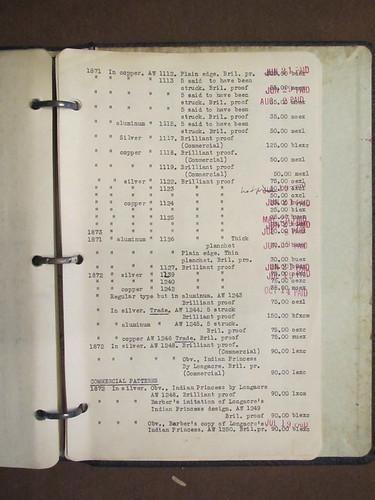
1872 Dollar
The relevant entry in the first photo is as follows: “[1872 in] copper AW 1246 Trade. Bril. proof 75.00 muex.”
The Heritage auction catalog information appears below.
1872 T$1 Trade Dollar, Judd-1221, Pollock-1363, High R.7, PR66 Red and Brown NGC. CAC.
Design. The obverse is the William Barber adaptation of Longacre's Indian Princess design. She faces left, with 13 stars each around and on the flag, a large globe inscribed LIBERTY in raised letters, date 1872 below. The reverse is the first Trade dollar pattern, copying the Commercial dollar patterns. A wreath with UNITED STATES OF AMERICA at upper rim, and inside TRADE/DOLLAR/(bar ornament)/420 GRAINS. 900 FINE/(bar ornament). IN GOD WE TRUST is on the ribbon of the wreath. Struck in bronze with a reeded edge.
Commentary. Less than half a dozen examples of this Trade dollar pattern are known and this is the first that we have handled. The actual surviving population may be as low as three or four pieces. Nearly a decade has passed since the last market appearance of this pattern variety. Prior to certification of the Newman specimen, NGC and PCGS had each certified a single PR63 Red specimen. The two grading events almost certainly represent a single coin that appeared in a 1994 Bowers and Merena sale as PR63 Red PCGS, and reappeared in a 2003 American Numismatic Rarities sale as PR63 Red NGC.
Physical Description. Lightly mirrored and fully brilliant orange surfaces host delicate blue patina, with 90% of the original mint color remaining. A sharp strike and excellent eye appeal are evident.
Provenance. "Colonel" E.H.R. Green; Green Estate; Partnership of Eric P. Newman / B.G. Johnson d.b.a. St. Louis Stamp & Coin Co.; Eric P. Newman @ $75; Eric P. Newman Numismatic Education Society. From The Eric P. Newman Collection. (PCGS# 71493)

1873 Dollar
The pertinent entries in the next photo are of two 1873 Trade dollars: “[1873 In] silver. Obv., of AW 1317. Rev., AW 1328 Plain edge. Not in AW. Brilliant proof Trade 50.00 moex” and a duplicate“1873 In silver. Obv., AW 1317. Rev., 1328. Plain edge. Not in AW. Brilliant proof 50.00 moex .” Eric P. Newman chose the finer specimen.
Heritage’s description follows.
1873 T$1 Trade Dollar, Judd-1294, Pollock-1436, High R.7, PR66 NGC.
Design. The obverse depicts Liberty seated with her left hand resting on a globe and a Liberty pole and cap in her right hand. Bales of cotton, a sheaf of wheat, and a short-handled plow are nearby. Thirteen stars around and the date below. The reverse features Barber's Amazonian style eagle, but with a ribbon inscribed E PLURIBUS UNUM in the beak. UNITED STATES OF AMERICA above and fineness and denomination below. Struck in silver with a plain edge.
Commentary. Judd-1294 was offered for sale to collectors in six-piece sets, including five other Trade dollar patterns, for $30 in 1873. Only about six examples remain, with a total of five submission events recorded at NGC and PCGS combined. This coin is tied with one PR66 Cameo NGC example for the finest numerical grade at either grading service. As noted on the envelope, this issue was not included in the Adams-Woodin pattern reference, although Pollock mistakenly lists AW-1317, which shares the same obverse, as its equivalent.
Physical Description. This delightful Premium Gem is sharply detailed in most areas, with just a touch of softness on the eagle feathers. Attractive shades of pink, gray, and cerulean-blue patina blanket the well-preserved surfaces, and traces of reflectivity shine through the toning. Eye appeal is outstanding. Census: 1 in 66, 0 finer (2/13).
Provenance. "Colonel" E.H.R. Green; Green Estate; Partnership of Eric P. Newman / B.G. Johnson d.b.a. St. Louis Stamp & Coin Co.; Eric P. Newman @ $50; Eric P. Newman Numismatic Education Society. From The Eric P. Newman Collection. (PCGS# 61579)
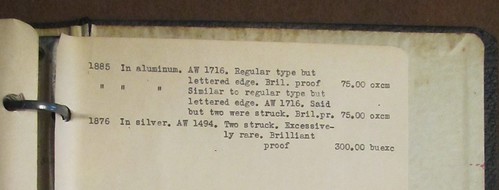
1885 Dollar
The third photo of a ledger page contains the entries for two specimens of the “Snowden Dollar,” the better of which was retained by Eric P. Newman: “1885 In aluminum. AW 1716. Regular type but lettered edge. Bril. proof 75.00 oxcm” and “[1885 In aluminum] Similar to regular type but lettered edge. AW 1716. Said but two were struck. Bril. pr. 75.00 oxcm.”
The Heritage catalog description appears below:
1885 P$1 Snowden Dollar, Judd-1749, Pollock-1961, Low R.7, PR68 Cameo NGC. CAC.
Design. The dies are the regular-issue 1885 Morgan dollar dies, but there is experimental edge lettering as follows: * * * * * * E * / PLURIBUS * / UNUM * * * * *. Struck in aluminum with a tripartite collar for the edge lettering.
Commentary. The so-called Snowden dollars were struck as an anti-counterfeiting measure, following the arrest in 1884 of two skillful counterfeiters. The edge was struck from a novel three-part collar that produced raised edge lettering on the coin. Considerable experimentation went into the production of these pieces, and on June 12, 1885 Snowden and his staff succeeded in getting the mechanism to work at normal production speeds of 80 to 100 coins per minute. Snowden retired at the end of the year, and left placement of the raised lettering to his successor. Director Burchard left office around the same time, and no one remained in the Mint who had Snowden's insight, ability, or willingness to experiment to carry his project forward to completion.
Physical Description. This dollar is essentially "as struck." The nearly brilliant surfaces show no obvious contact marks on either side. The fields are deeply mirrored and show evidence of die polishing. Contrasted against the depth of mirroring on each side, the devices are noticeably frosted, producing a strong field-device contrast. Contrast is almost expected on aluminum patterns. These pieces struck up nicely and a high percentage display deep mirroring and cameo contrast. Additionally, this nearly perfect piece does not show any of the planchet laminations or streakiness often encountered in aluminum coinage. Nor is there any trace of oxidation. This is the only PR68 Snowden dollar certified at either grading service, and it is followed by a pair of PR67 Cameo coins, one at NGC and one at PCGS as the second finest examples known (2/13).
Provenance. "Colonel" E.H.R. Green; Green Estate; Partnership of Eric P. Newman / B.G. Johnson d.b.a. St. Louis Stamp & Coin Co.; Eric P. Newman @ $75; Eric P. Newman Numismatic Education Society. From The Eric P. Newman Collection. (PCGS# 62191)
Items being sold are from the extensive collection of Eric P. Newman Numismatic Education Society (a Missouri not-for-profit corporation) and have been assembled over a period of 90 years. Proceeds of the sale of all items will be used exclusively for the benefit of other not-for-profit institutions selected by Eric P. Newman Numismatic Education Society for public purposes and also for supplementing the Society's own museum operations and scholarly research efforts.
SEATTLE'S ROBO-LIBRARIAN
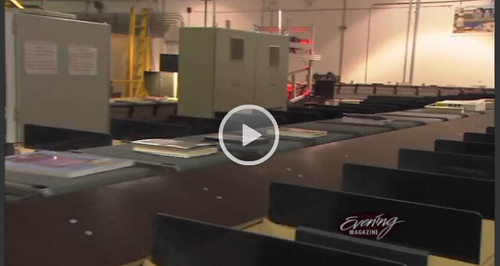
Seattle's Evening Magazine visited the King County Public Library distribution center to profile the "Tin Man," the largest book-sorting machine in the country and the humans that feed it.
The monster is half the size of a football field and processes between 38-45,000 books a day.
Its job is to Sort-Scan-Plop, Sort-Scan-Plop all day long.
Interesting tidbit - aside from the King County Library system having the largest book-sorting operation for physical books they also lend more ebooks than any other library system in the country!
To read the complete article, see: The Robo-Librarian (www.bookpatrol.net/2013/03/the-robo-librarian.html#.UVYkh5ONo0F)
QUERY: 1875-S DIME AND 1917-D HALF DOLLAR IMAGES SOUGHT
Dave Bowers writes:
In connection with an upcoming project can anyone send me high-resolution color images of a 1917-D (obverse) half dollar and an 1875-S (Mint Mark below wreath) dime? Special request. Reward: credit lines. Email me at qdbarchve@metrocast.net.
MORE ON HEIDI WASTWEET'S FREEDOM GIRL
I wrote:
 We have a mutual friend in Roger Burdette. He first introduced me to your work, and I’ve been very impressed. I came across a web page today with an image of the Freedom Girl silver round, and I immediately thought – “This looks like a Heidi Wastweet medal!”.
We have a mutual friend in Roger Burdette. He first introduced me to your work, and I’ve been very impressed. I came across a web page today with an image of the Freedom Girl silver round, and I immediately thought – “This looks like a Heidi Wastweet medal!”.
According to the web page, I was right. I was wondering if you could tell me more about the piece and how you came to work on it. Could you also confirm that the plaquette pictured on the page is your work as well?
Heidi Wastweet writes:
Thank you for your kind comments! I'm impressed that you recognized Freedom Girl as my design before seeing my name.
My first sculpt for the Silver Bullet Silver Shield group was the Debt & Death and the common reverse shield. Then I did the Slave Queen. Those were designed by Chris Duane and Micheal Berman with some final detail input from myself. Freedom Girl was the brainchild of Chris Duane. He asked me to design a modern coin inspired by the Peace Dollar Liberty Head, but instead of liberty he wanted to represent freedom, symbolized by flowing hair.
I've done a few other modern Liberty Heads including my satirical "Abbreviated Liberty" art medal:
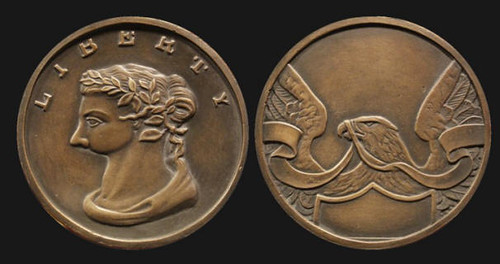
http://wastweetstudio.com/smAbrevLib.html
So, this was just the kind of thing I love to do. I chose a forward gesture combined with the wildly flowing hair for a sense of movement. A Trivium tattoo and simple hoop earring add to the modern feel. Her facial features also represent a more contemporary idealized beauty compared to the classic American Liberty Head.
While I'm humbled to have it compared to the Peace Dollar, I've been floored at the overwhelming positive response to the Freedom Girl. It is an instant phenomenon.
The other plaque pictured is my Pandora Defiant.
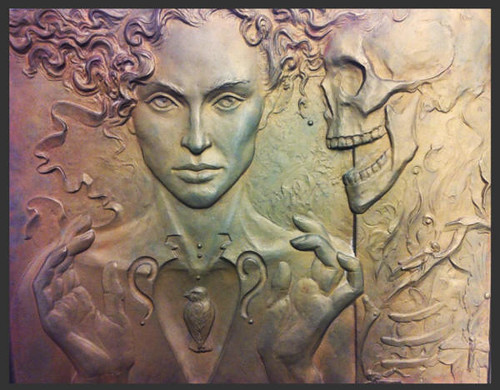
http://wastweetstudio.com/ss_Pandora.html
I replied:
Thank you for your response. I get flashes of recognition every once in a while. Once my wife turned on the radio and it was a new song by Celine Dion that neither of us had heard before. A third of the way through it, I blurted out, “that had to be written by Jim Steinman!” I’m no audiophile, but I was familiar with his work for Meatloaf and Bonnie Tyler, and the style was unmistakable.
When I saw Freedom Girl I immediately thought of the medals I’d seen on your web site – smoothly sculpted three-dimensional figures with flowing curves and a life of their own, far more defined than the nearly two-dimensional designs so often seen today. More the product of a Laura Fraser working in clay than a 21st century mouse jockey. If you use a computer it’s hard to tell.
Heidi adds:
You are correct to speculate that I am working in clay not with a mouse. I use the computer plenty, but when it comes to sculpting I'm pretty old school. I work in oil clay and plaster. I'm often asked if I think the new 3D digital sculpting programs will make hand sculpting obsolete. I believe that it is just another valuable tool for the artists, not a replacement for hand sculpting.
To read the complete article, see: HEIDI WASTWEET'S FREEDOM GIRL (www.coinbooks.org/esylum_v16n12a22.html)
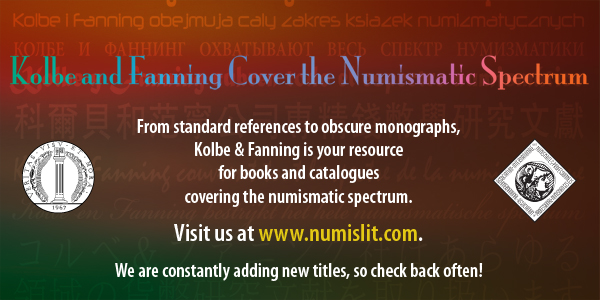
WILL BASEBALL COIN THROW MINTING TECHNOLOGY A CURVE?
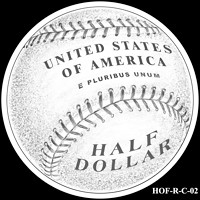 So, you want to design a coin?
So, you want to design a coin?
While U.S. Mint sculptors will design the common reverse of commemorative coins celebrating the National Baseball Hall of fame, a national competition launched April 11 will determine the common design for the obverse.
U.S. citizens ages 14 and older may submit a design for the obverse side of the $5 gold, $1 silver and half dollar clad coins to be issued under the 2014 national baseball Hall of Fame Commemorative Coin Program.
The winner will receive $5,000 and have their initials placed on the coin, which will be the first curved commemorative coin.
Complete rules are available at http://www.usmint.gov/batterup/?action=rules. The competition ends May 11 or earlier if 10,000 entries are received by May 11.
Meanwhile, the Citizens Coinage Advisory Committee and the Commission of Fine Arts have recommended designs for the convex reverse of the coins. A common design is proposed, with changes in the denomination designation for the three coins.
The CFA recommended reverse design No. 2 that prominently displays UNITED STATES OF AMERICA and E PLURIBUS UNUM in the “sweet spot” of the ball between the laces. It just asked the Mint sculptors to be certain the lettering has the proper dimension to project the convex design of the ball, according to CFA Secretary Tom Luebke.
To read the complete article, see: Public to Design Obverse of Baseball Commemorative (www.numismaster.com/ta/numis/Article.jsp?ArticleId=26733)
A technical amendment to “specify the size of the precious metal blanks” to be used in production of the 2014 National Baseball Hall of Fame commemorative gold $5 coins and silver dollars is pending in Congress.
The United States Mint requested the amendment to enable it to meet the requirements of the authorizing legislation for the coins. The Mint is required to use a technique that would produce gold $5 coins and silver dollars with a concave obverse and a convex reverse. The reverse of each coin is to depict a baseball, with the convex effect enhancing that resemblance.
The proposed legislation would mandate the specific size of the planchets used to produce the 50,000 gold $5 coins and the 400,000 silver dollars that are authorized.
According to a spokeswoman in Hanna’s office, the U.S. Mint requested the amendment because “the doming of the coin turned out to require a smaller [coin] circumference than [mandated] in the law (due to the physics of it). Neither we nor the Mint thought of the issue. I believe this is the first time they’ve domed a coin.”
“Imagine a contact lens. When you shape it, it loses a bit of its dimension. Consequently, the same would be true with the baseball coin — or any curved coin,” Jurkowsky said. “If we were to follow the exact letter of the law, we’d have to use two planchets or a special order one — adding to the cost. Clearly, this was not the intent of Congress and the sponsors of the legislation. Accordingly, the resulting coin may be a ‘smidgen’ less than as set forth in the legislation.”
To read the complete article, see: Concave/convex Baseball coins pose challenges (www.coinworld.com/Articles/ViewArticle/concave-convex-baseball-coins-pose-challenges)
MINT ENDORSES PRIVATE COINAGE WITH ITS SURPLUS DIES
The U.S. Mint announced today that it will begin selling slightly used, still serviceable coin dies for sale to the public. It is a plan to greatly increase the public awareness of American coins while still adding to the sale of numismatic items from the U.S. Mint. In effect it endorses a private coinage.
The provision calls for a schedule of cent dies for sale at $1,000 each ranging up to $10,000 for dollar dies. Only one side will be allowed to be sold to one person. The buyer may be able to take that die to a private mint and have a companion die made with images, and inscriptions of his own choice, creating a truly democratic, semi-private American coinage
Further -- and this is important if the person plans to circulate the new coins-- it must put the full amount of metal composition's value into the struck coin as its face value. Profit making on these coins, called seignorage, will not be allowed under the Obama administration.
It is estimated the cents and nickels will be smaller than they are now because of the their alloy costs., However quarters and half dollars will be much larger if struck in the same alloy.
Mint spokesman Larry Franklin stated that the Mint will take great pains not to sell an obverse and a reverse of the same denomination to separate people in the same state, as the possibility of them joining forces with their dies and striking a coin much like one from the Mint. This would continue to remain illegal, he stated.
Oh, wait isn't Monday April 1st?
Archives International Auctions, Part XIV
Auction Update - Archives International Live
Save the Date
Tuesday, April 16th, 2013
in Fort Lee, New Jersey
ARCHIVES INTERNATIONAL AUCTIONS, PART XIV
Rare U.S. & Worldwide Banknotes, Scripophily and Security Printing Ephemera Including Additional Selections from the Hamtramck Collection, another offering from the American Bank Note Commemoratives Inventory as well as Properties of Banknotes, Coins and Scripophily from various consignors.
Included will be over 1000 lots of Rare Worldwide Banknotes, Coins and Scripophily. Please view our website for auction updates
Fort Lee, NJ 07024
Phone: 201-944-4800
Email: info@archivesinternational.com
WWW.ARCHIVESINTERNATIONAL.COM
NPR EXAMINES THE SCIENCE OF 'WHERE'S GEORGE?'
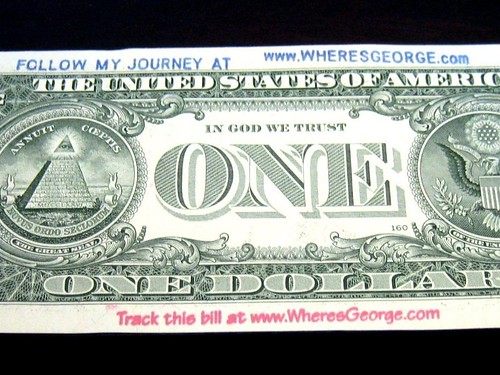
When you hear the words "social network" you probably think of Facebook or Twitter. But years before either of those websites — when most of us weren't using the Internet at all — a smaller, stranger community was emerging around something called WheresGeorge.com, a 15-year-old subculture that's dedicated to the $1 bill.
At Kabooz's Bar and Grill at New York's Penn Station, Jennifer Fishinger is covering her table in stacks of ones. There are 500 $1 bills laid out.
At the next table over, David Henry has his stacks of cash in plastic bags. They're paper-clipped $1 bills in groups of 10.
For this group, it's all about the George Washingtons. Their dollars are stamped with messages like "currency tracking project" and "Track me at WheresGeorge.com." The website is the brainchild of Hank Eskin, a former tech consultant.
"I started the website in '98 as just a quirky idea. I didn't expect anything to happen," Eskin says. "I had no idea it would turn into a hobby or create this whole sensation."
It's called Georging. And typical Georgers log in religiously to enter their dollars' serial numbers and ZIP codes before they stamp and spend them. If one gets entered a second time, the Georger gets an email. That's called a "hit."
"As a data set, it is very sexy," says Dirk Brockmann, a theoretical physicist at Northwestern University. He was studying human mobility when a cabinetmaker in Vermont told him about the website.
"I was like, 'Oh wow, this is amazing because it's data that goes down to the ZIP code scale in the U.S.,'" Brockmann says.
By analyzing the Where's George? data, he's tested theories about networks, modeled infectious diseases and mapped the flow of currency in the U.S.
"It turns out that what started as a — in quotes — 'silly game' did some massive science, it was like the first measurement of human mobility on this scale," he says.
To read the complete article, see:
Where's George?: The Trail Of $1 Bills Across The U.S.
(www.npr.org/2013/03/24/174966382/wheres-george-the-trail
-of-1-bills-across-the-u-s)
BALDWINS TO AUCTION FINAL PART OF THE BENTLEY COLLECTION
Baldwin’s are delighted to present the third and final part of this historic collection, due to be offered for sale by public auction on the 8 May in London. It will draw to a close the sale of the most spectacular and comprehensive assemblage of British gold Sovereigns. Part three will contain 307 lots of the London Royal Mint issues not already offered. Each example is described in as much detail as possible in the same vein as the previous two parts. After the final part has been sold a limited edition Collectors catalogue will be produced containing all three parts together with prices realised and any corrections made.

Lot 941, undoubtedly the highlight and the most valuable coin in this part of the sale is the George III 1819 Sovereign by Benedetto Pistrucci. The key date of the London series had a very low calendar mintage (3,574) and there are fewer than ten known examples in private hands. The preference of the public at that time was for spending and saving with banknotes instead of gold. It is suggested that most of the new sovereigns of 1817 found their way overseas with tourists wanting to spend freely on the continent and the subsequent demand therefore diminishing into the 1818 issue and beyond. Once restrictions on payment of gold were removed by the Bank of England from 1820-23 the Sovereign only then became more firmly established and took over as the payment medium from banknotes.
Elsewhere in the collection are two further high-value George III sovereigns. Lots 940 and 957, an 1816 gold pattern sovereign engraved by Thomas Wyon Jnr and an 1818 Gold Proof Sovereign, engraved by Benedetto Pistrucci are both estimated at £15,000 – 20,000.
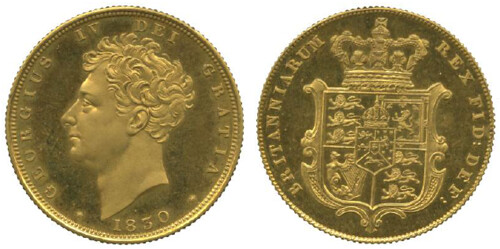
Lot 957, an 1830 George IV, Proof Sovereign, engraved by William Wyon after Francis Chantrey’s model, depicts the head of the King facing left on the obverse and, on the reverse, carries eight hearts in the Hanoverian Arms like the currency pieces, as opposed to the seven heart semee plain edge piece published in part one of the Bentley Collection for the very first time.
For more information, see: www.baldwin .co.uk
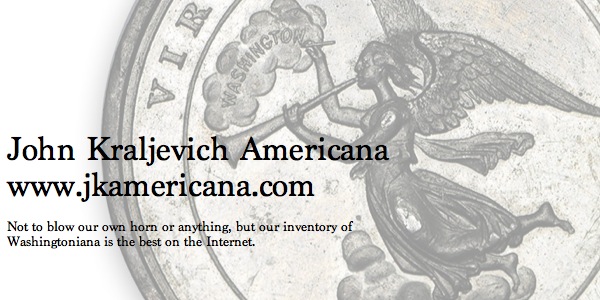
DOES U.S. PAPER CURRENCY MATCH MONOPOLY MONEY COLORS?
The following image is going viral today (via Freebeacon's Lachlan Markay) allegedly showing that the government has possibly, by coincidence, made the colors on new U.S. dollar denominations identical to their Monopoly money counterparts:
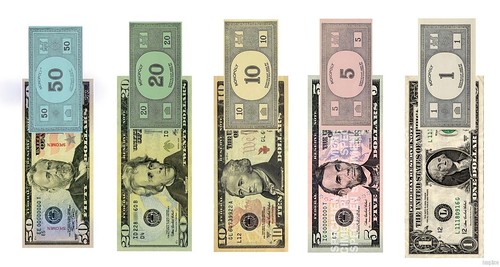
The picture was recently posted to reddit, but has been around since at least 2011. The denominations shown started coming out in 2003.
So is it true that the currency really matches like that? Our conclusion is: Sort of.
Whoever made the above image appears to have enhanced the color of real currency a bit to make it match.
To read the complete article, see: WAIT: Does US Paper Currency Really Perfectly Match The Color Of Monopoly Money? (www.businessinsider.com/reddit-fed-monopoly-money-image-2013-3)
WHERE ARE THE NEW $100 BILLS?
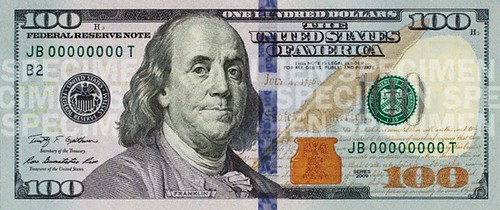
It’s been nearly three years since the captains of the Federal Reserve, U.S. Treasury, U.S. Secret Service and the Bureau of Engraving and Printing gathered with bankers, journalists and financial security types in the Cash Room at the U.S. Treasury building to unveil the new $100 banknote. The event — pageant, really — received obliging media coverage, but wasn’t exactly page-one material.
“Individuals, businesses and governments around the world put their confidence in our currency,” said then-secretary of the Treasury, Timothy Geithner. “They use the dollar because they know that it is backed by the most sophisticated anticounterfeiting technologies known to men, that the design can’t be stolen or replicated.”
Geithner was dutifully shoveling it. Making money always has been, and always will be, an endless arms race. Completely outsmarting counterfeiters, like terrorists, is impossible. The security wizardry moves an inch, and counterfeiting soon follows, and on and on. “You know, we just can’t rest,” said Douglas Crane, the vice president of Crane & Co., in a radio interview a few years ago. The Massachusetts-based firm is the Bureau of Engraving and Printing’s sole supplier of the souped-up paper used to make our cash supply. Pressure from counterfeiters is great for Crane’s business.
But the new $100 is so high-tech that it has even stymied its progenitor. In December 2010, Bureau officials tersely confessed to a problem: a printing error, affecting as much as $110 billion worth of paper. Taxpayers only paid 12 cents apiece for the faulty notes, or $120 million. That’s not that much money by sovereign-debt standards and provided you’re willing to ignore downstream costs like storing and securing the bad bills, redistributing older-series notes to banks and cash-management firms, investigating and remedying the screwup, determining what to do with the mountain of almost money, and producing vanilla video clips to keep the public informed.
The tangled story of the biggest snafu in the history of paper money dates back to 2000, when the Bureau launched its NXG series, starting with the new $20 issued in 2003. The new hundy was going to be the pièce de résistance, produced, in the words of one industry expert, with “the most complex security features ever incorporated into a U.S. banknote.

So when can you have a NextGen Benny? The Fed won’t say. Here’s what we do know. In the summer of 2010, Bureau quality controllers began noticing that bills coming off the massive intaglio presses had a blank sliver due to a crease in the paper. Somehow Crane’s cotton-linen substrate wasn’t staying perfectly flat as it squeezed through the presses, resulting in a small fold. It’s like when you accidentally iron over a fold of a shirt and end up creating a sharp crease.
To read the complete article, see: The NextGen Benjamins Fiasco (www.wired.com/business/2013/03/the-nextgen-benjamins-fiasco/all/)
THE MONEYMUSEUM IS AUCTIONING COINS TO RAISE FUNDS
The MoneyMuseum is selling pieces from its collection to help finance its presence on iTunes University
The MoneyMuseum is selling some of the precious items from its collection. The money raised won't be going to ongoing maintenance, however, but rather to financing an innovative new project: The MoneyMuseum will be presenting podcasts on iTunes University on topics from the world of money.
The MoneyMuseum has a new project. It will be presenting a series of both short and more comprehensive podcasts on iTunes University on the topics of coins, money, economic history, economics and banks and stock markets. Of course, these podcasts will also touch on themes like alternatives to the current prevailing monetary system and the future of money. The past will also figure prominently: Podcasts featuring numismatic content will also regularly be available for download.
In order to realize this mammoth project, Dr. Jürg Conzett, founder of the Sunflower Foundation and director of the MoneyMuseum, has decided to auction off a tiny but valuable portion of the museum's own collection. The pieces consist of the finest quality Greek coins, for the most part, whose selection is owing not just to the collector, Jürg Conzett, but also most notably to Leo Mildenberg. The widely known numismatist and coin dealer oversaw the coin collection of the MoneyMuseum until his death in 2001.
With his trained eye, Mildenberg procured outstanding pieces for the MoneyMuseum – with respect to style and condition. As a result, some examples from the collection include what may be considered the finest known specimens, as is the case with the tetradrachm from Catane, purchased at Bank Leu 71 (1997), No. 50. The same is true for a fine tetradrachm from Leontini, acquired in the same year at the first auction of the then newly founded company Triton, in New York.


The true highlight of the coins that will be offered for sale, however, are three coins from Syracuse: 1.) A tetradrachm of the Demareteion series, extremely fine, wonderfully struck and centered; 2.) A dekadrachm of exquisite beauty signed by Euainetos, whose avers displays none of the usual traces of rust from the die; and 3.) A tetradrachm featuring the rare design of Arethusa, the hair gathered under a folded hood.
The Museum of Ancient Art Basel's 1988 catalogue, page 128, offers the following about this type of coin: "The monumental, serious head is unique among the array of early classical Arethusa heads. Its master – who, apart from this piece, is undetectable in Syracuse – combines increased physicality, expressed here in the folds of the hood, with a new sense of spatial positioning."
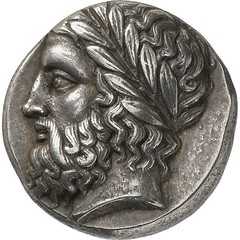
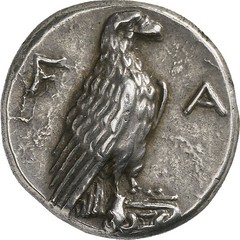
Also of outstanding beauty is the Zeus head on the stater of Elis, purchased at Sotheby's in 1998. It has featured in both the Lambros collection as well as that of Sir H. Weber and R. Jameson. From the Trampitsch collections comes a stater of the Parisii. It is among the most splendid representatives of these early precursors of abstract art.
These are just some of the examples of the coins that the MoneyMuseum will be selling in order to finance its newest project. International auction house Numismatica Ars Classica will act as partner for the sales. The ancient coins will be coming up for auction on May 16th and 17th, 2013 in Zurich. The Italian coins will be offered in the fall auction.
You can learn more about the auctions online at www.arsclassicacoins.com. Additional information about the MoneyMuseum as well as the complete collection can be found at www.moneymuseum.com. You can also use or download many of the MoneyMuseum's products on the Sunflower Foundation / Media site, at: www.sunflower.ch/index.php?p=media_home
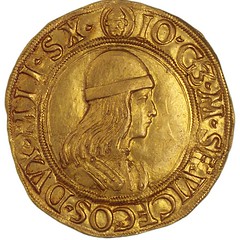
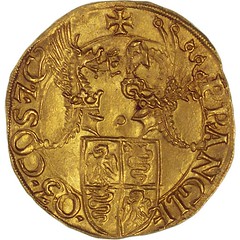
1 Catane (Sicily). Tetradrachm. From Bank Leu auction 71 (1997), 50.
2 Leontini (Sicily). Tetradrachm. From Triton auction I (1997), 257.
3 Syracuse (Sicily). Tetradrachm of the Demareteion series. From Bank Leu auction 76 (1999), 54.
4 Syracuse (Sicily). Tetradrachm. From NAC auction 13 (1998), 447.
5 Syracuse (Sicily). Dekadrachm, signed by Euainetos. From Naville-Ars Classica auction 13 (1928), 342 and NAC 13 (1998), 481.
6 Elis. Stater. From the Lambros collections; Sir H. Weber and Jameson. From Sotheby auction (December 1998), 24.
7 Ptolemy I (Egypt). Tetradrachm. From Bank Leu auction 71 (1997), 243.
8 Gian Galeazzo Maria Sforza of Milan. Double ducat. From Bank Leu auction 68 (1996), 359.
THE BOOK BAZARRE
ARTICLE DISCUSSES 1936 CANADIAN DOT CENT
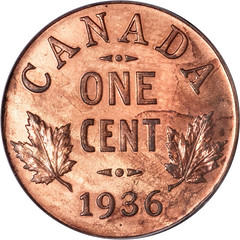 Just weeks after the Canadian penny was pulled out of circulation, the single most famous one-cent coin ever produced in this country — an “exceedingly rare” and valuable 1936 “dot cent” stolen from a U.S. collector in 1964, then mysteriously returned to him — is set to be sold at an American auction next month for at least $250,000.
Just weeks after the Canadian penny was pulled out of circulation, the single most famous one-cent coin ever produced in this country — an “exceedingly rare” and valuable 1936 “dot cent” stolen from a U.S. collector in 1964, then mysteriously returned to him — is set to be sold at an American auction next month for at least $250,000.
The penny was one of just three known to have been created by the Royal Canadian Mint at a time when the nation’s coin-makers were scrambling to prevent a shortage of properly stamped coppers. The crisis loomed at the end of a tumultuous year for coin engravers, during which George V died and his son, Edward VIII, became king for only a brief reign before abdicating in favour of his younger brother, George VI.
Between the time Edward VIII gave up the throne in December 1936 (to marry American divorcee Wallis Simpson) and George VI was formally crowned in May 1937, nervous Canadian officials — lacking a profile portrait of the unexpected new king to stamp on the country’s coinage — prepared for a stopgap re-minting of the old George V design.
To distinguish any new batch of coins that might have been required from the earlier production runs of 1936 George V pennies, a tiny dot was added by mint technicians in the space beneath the “1936″ date of the posthumous prototypes, believed to have been made in early 1937.
Two of the three documented 1936 “dot cent” specimens wound up in the hands of retired Royal Canadian Mint employee Maurice LaFortune of Ottawa. And by the early 1960s, that pair of pennies — as well as the third one, once owned by the widow of another mint employee from Ottawa — had been acquired for a few hundred dollars each by the legendary Rochester, N.Y., coin collector John Jay Pittman.
Before his death in 1996, Pittman would assemble a treasure of numismatic rarities worth $30 million, with the three dotted pennies from Canada among his most prized possessions.
One was sold in 1999 for $115,000. Another was auctioned for $230,000 in 2003 and then resold in 2010 for a stunning $402,500 U.S.
The third of the three — and the one to be sold next month by Texas-based Heritage Auctions at its “World and Ancient Coins” sale in Chicago — has had a particularly intriguing history, having been snatched by thieves from Pittman’s home in 1964 along with a number of other valuable items.
Then, inexplicably, the New York collector received an unsigned envelope containing — along with a few of his other stolen coins — the dotted 1936 penny with a slight scratch on the “3″ of the date.
That penny was sold in 1997, the year after Pittman’s death, for $121,000. It sold again in 2004 for $207,000, and Heritage estimates it will fetch $250,000 to $300,000 at its April 18 auction in Chicago.
To read the complete article, see:
One of only three ‘dot cent’ Canadian pennies set to sell at U.S. auction for at least $250,00
(news.nationalpost.com/2013/03/26/one-of-only-three-dot
-cent-canadian-pennies-set-to-sell-at-u-s-auction-for-at-least-250000/)
NATIONAL GOLD EXCHANGE MANSION PRICE CUT
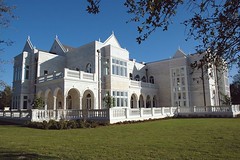 The price for disgraced gold dealer Mark Yaffe's opulent megamansion dropped last week to $12.9 million, half off from when it first hit the market in 2008.
The price for disgraced gold dealer Mark Yaffe's opulent megamansion dropped last week to $12.9 million, half off from when it first hit the market in 2008.
Modeled after a 17th century British royal palace, the 29,000-square-foot home is one of Tampa Bay's largest, adorning 6 acres of Tampa's posh Avila country club.
But no buyer has jumped at the listing since Yaffe, the former head of liquidated coin wholesaler National Gold Exchange, declared bankruptcy and agreed to sell the home to pay off tens of millions in debt.
First listed at $25 million, the home's price has shrunk three times over five years of market lingering.
But its listing agent said the most recent drop, from $14.9 million, could be its last, having already drawn in three "serious inquiries," including from two unnamed international prospects.
"When something isn't selling, it's always price, price, price," Coldwell Banker agent Michelle Fitz-Randolph said. "They are very motivated to sell."
Taking seven years to build and design, the home at 706 Guisando de Avila was on the market only four years after its 2004 completion. Lawyers in Yaffe's bankruptcy case said in 2009 that the sale of the "Versailles-type" estate could take years.
Swaddled in custom-designed limestone and marble, the 10-bedroom, 10-bathroom manor boasts 14 fireplaces, a formal ballroom, a wood-paneled library, a wine cellar and a private basketball court.
Yaffe, who as a teen sold coins at a flea market, designed the Jacobean palace as a showcase for his antique music machines. His collection included a Hupfeld Phonolist Violina, a player piano for violins, valued at $1 million, and a rare Hupfeld Helios orchestrion, designed to mimic an orchestra, which he bought for $1.2 million.
To read the complete article, see:
Bankrupt gold dealer Yaffe's Avila megamansion now half price
(www.tampabay.com/news/business/realestate/bankrupt-gold
-dealer-yaffes-avila-mega-mansion-now-half-price/2111189)
New list available free!
Counterstamped Coins
and
Civil War Store Cards
from the estate of
Stephen L. Tanenbaum
Do you collect counterstamped coins and/or Civil War store cards, or would you be interested in doing so? I invite you to e-mail me for my latest list of pieces from the Stephen L. Tanenbaum Estate Collection. These pieces have been off the market for a long time—some of them since the 1960s!
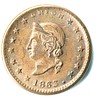
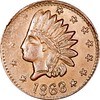
For more than 40 years Steve gathered these, continually improving and upgrading. His counterstamps include many pieces listed and or even illustrated in the Gregory Brunk and Russell Rulau catalogs plus many that are unique or unlisted! The vast majority of the Civil War store cards Mint State, many certified by NGC (which Steve was in the midst of doing) and others still in his 2x2 cardboard holders. Rarity-9 (2 to 4 known) tokens abound as do, believe it or not, R-10 (unique) tokens and unlisted varieties. Among Civil War tokens are strikes in copper-nickel, overstrikes on Indian Head cents, rarities with various Stanton reverses (1042 and 1047 gems in abundance), mint errors, “rare towns,” brockages, and more await your consideration.
 The majority of the counterstamps and Civil War tokens are highly affordable. And, of course, all are interesting! Nearly all are one-of-a-kind in the estate and are available on a first-come, first served basis. If you will send me an e-mail request I will send you my latest list by return e-mail.
The majority of the counterstamps and Civil War tokens are highly affordable. And, of course, all are interesting! Nearly all are one-of-a-kind in the estate and are available on a first-come, first served basis. If you will send me an e-mail request I will send you my latest list by return e-mail.
Thank you for your interest!
Box 539
Wolfeboro Falls, NH 03896
Request by e-mail: qdbarchive@metrocast.net
MORE ON FRANKLINIUM
"Franklinium" was a proprietary alloy created by the Franklin Mint as it embarked on its meteoric rise. It was a glorified copper-nickel alloy (not bronze) with an added dash of Columbium that made it possible to patent. Franklin Mint mogul Joseph Segel (not "Siegel") had hopes of selling Franklinium to the U.S. Mint, providing the Gardiner's Island Proof sets to publicize the metal. The Mint didn't bite, being unwilling to place the nation's coinage metal in the stranglehold of a private company, however aggressive.
A wonderful commentary on Segel, the Franklin Mint and Franklinium appeared in "The Numismatic Review," published by Coin Galleries in 1965. Editor, the lamented James C. Risk and Glenn Godwin wrote a satirical announcement of the release of Proof coins of "The Military Order of the Maltese Falcon, Edsel Division." These coins were to be based on a unit called the Fake, composed of 100 Bogus. "The crown sized Fake will be struck in
To read the earlier E-Sylum article, see:
VOCABULARY WORDS: VERMEIL AND RUBEDO
(www.coinbooks.org/esylum_v16n12a12.html)
Police have arrested a man who tried to return a printer to his local Walmart with a page of counterfeit bills, after he broke the item trying to print a page of fake one hundred bills.
Jarad S. Carr, 37, went to the Walmart in Lake Hallie, Wisconsin last Thursday with the printer but without a receipt, the store refused to refund his money.
But Carr insisted and after inspecting the item, store workers saw the counterfeit money and informed police.
Police officers arrived at the store and tried to question the man. He resisted arrested and a struggle ensued at the Customer Service Center at the discount retailer.
In addition to the page of counterfeit bills found in the printer, Carr was found with three additional counterfeit $100 bills.
He has been charged with attempt theft by fraud, forgery and resisting arrest.
'You go to a Walmart with a printer to return and no receipt, with your counterfeit bills still lodged in it, and you want to dicker with the clerks to get half price back, when you have warrants out for you,' Police Chief Cal D. Smokowicz told NBC News.
'There are a few lessons here about not drawing attention to yourself.'
To read the complete article, see:
Would-be counterfeiter tries to return broken printer to Walmart with sheet of fake $100 bills still inside
(www.dailymail.co.uk/news/article-2292173/Would-counterfeit
Ginger Rapsus writes:
I recall an exhibit of "Bunny coins" that won the People's Choice award at a number of coin shows, about 10 years ago.
John Sallay writes:
Regarding your question concerning other examples of Easter-themed coins, there are certainly many Easter-themed medals. For example, a few years ago you published a photo the Norrisian Prize Medal that I had submitted. Also shown on NeoCollect are several Sunday School medals struck by William H. Key, including several with an Easter theme.
To view the complete NeoCollect description, see:
Cambridge University - Norrisian Prize
(www.neocollect.com/item/3252/)
To view the complete NeoCollect description, see:
johnsallay - William H. Key Medals
(www.neocollect.com/coll/403/?page=3)
To read the complete article, see:
THE CAMBRIDGE UNIVERSITY NORRISIAN PRIZE MEDAL
(www.coinbooks.org/esylum_v14n17a27.html)
To read the earlier E-Sylum article, see:
EASTER-THEMED COINS
(www.coinbooks.org/esylum_v16n12a27.html)
The ZAR Government on the Battle Field (Regering te Velde) gave permission to mint gold pounds. With this, the ZAR Field Mint (Munt te Velde) came into existence under authority of General Muller, who had to ensure that the requirements of the Coinage Act of the ZAR (no 14 of 1891) would be met. This law determined that a pound sterling should weigh 7.98805 grams and contain 7.3244 grams of pure gold.
Interesting note: Since the occupation of Pretoria, the British regarded the ZAR as being under their rule. In February 1901 Lord Milner proclaimed that both defacing and making coins was prohibited24. The manufacturing of the Veldpond at Pilgrim's Rest could therefore, under the British proclamation, be regarded as an unlawful act.
The rolling mill is the most important machine in the whole process of making gold coins, according to Perrin. He prescribed cylinders of no less than 1 ft in diameter (30 cm). Mines did have big rolling machines with which steel plates were bent. A logical conclusion is that the minting team used that machine for rolling out the gold.
The cast gold strip had to be rolled out several times until the correct thickness was reached. After each rolling session, the gold hardened and had to go through a process of annealing that entails heating it in an oven at a low temperature (200° Celsius) for 45 minutes and then cooling down slowly. When the desired thickness was reached, the gold strip was softened once more so that it could be cut into circular discs and the design imprinted on them. The correct heat treatment of the gold plates was most important as it could lengthen the life of the dies.
COUNTERFEITER RETURNS PRINTER WITH FAKE NOTES INSIDE
-tries-return-broken-printer-Walmart-sheet-fake-100-bills-inside.html)
MORE EASTER-THEMED COINS AND MEDALS
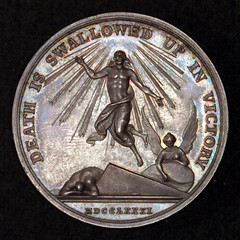
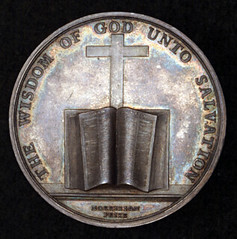

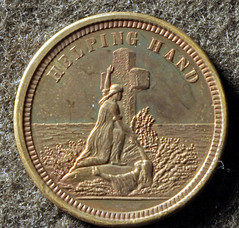
FEATURED WEB STE: THE VELDPOND COINAGE
This week's Featured Web Site is about the Veldpond coins issued near the end of the Anglo Boer War.
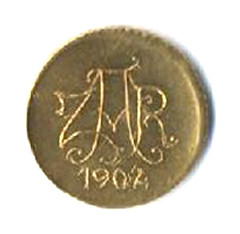

veldpond.co.za

